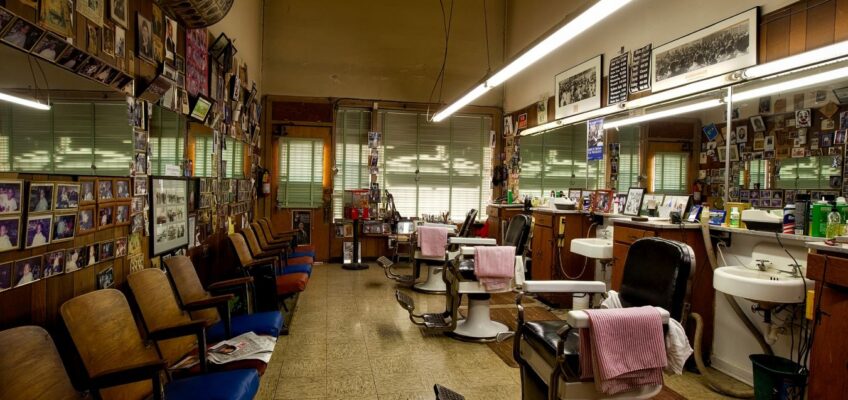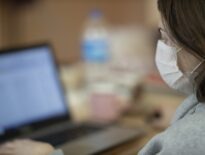Community anchor institutions like public libraries, schools, and government buildings have long served as backbones for initiatives to better connect communities and in doing so open up a world of possibilities that come with Internet access. Add to that list barbershops and salons, because one project is combining robust broadband and hypertension screenings to achieve better health outcomes for communities in urban areas around the country.
The project was conceived last winter by Craig Settles, who’s been working with public and private groups to advance community broadband efforts for more than a decade. At (eventually) ten locations in places like Cleveland, Wilson County, North Carolina, Chicago, and Denver, Settles is leading an effort to bring hypertension screening to urban areas by partnering with barbershops and salons. The aim is to leverage all of the unique characteristics of these businesses — including their strong community ties, their place as a social hub, the trust they hold with their customers, and the regularity with which they see them — to pioneer early detection and eventually ongoing treatment of high blood pressure and the constellation of associated complications (like coronary artery disease, stroke, and heart failure) that go with it. It’s a problem that disproportionately affects the African American population.
Settles told one news outlet:
Many hair dressers and barbers see their customers every other week or so, and shops and salons are tight communities. It’s noticeable when someone disappears and you find out later that the person is disabled by a stroke, or has died from a heart attack.
Old Idea, New Twist
Pairing haircuts and blood pressure screening itself isn’t brand new; Al Edmonson’s barbershop, A Cut Above the Rest, has been doing it for years in Columbus, Ohio. But Settles’ new initiative pairs mHealth devices (mobile devices like blood pressure cuffs and monitors that bring diagnostic work out of the hospital to anywhere with a Wi-Fi network), outreach work, and broadband to speed up the process and improve outcomes even more. Patrons visiting participating businesses like DiFrent Level Barber Studio in Wilson, North Carolina or Cleveland’s Urban Kutz (which has been doing manual blood pressure checks since 2008) add a few minutes to their routine. If the results warrant it and the customer consents, he or she can connect via videoconference with their healthcare provider through the free, HIPAA-compliant portal vSee to talk more or get advice, including ongoing care. The portal also provides access to educational materials.
Edmonson’s work in Columbus shows the potential for initiatives like these:
At first, men were cautious about getting the screenings. But after a while, over the years, they became more comfortable with it. They’d see the sign up and know I was going to ask them about it. Blood pressure, haircut. They go hand in hand.
We’ll no doubt see many more of these types of projects come to fruition as community broadband efforts and telehealth interventions continue to expand to address additional inequities brought on by the coronavirus pandemic. The next phase of Settles’ plan is to turn the same barbershops and salons into broadband hubs from which to expand access to vSee, launch additional telehealth initiatives and, eventually, more robust, affordable, high-quality Internet to the communities that need it most. But broadband remains the key.
“[M]ake no mistake,” Settles wrote this past June, “to narrow the healthcare gap requires more than thought, prayers, and the latest medical gadgets. At the city or county level, it requires a vision, a plan, community stakeholder support, political will, creativity, and money. And broadband. Great broadband.”
Real results
Advocates, doctors, and public health officials have seen significant impacts from the use of mobile diagnostic equipment and networking with doctors in real-time in recent years. Arkansas, for example, has had great success in reducing lifelong impairment for stroke victims by implementing protocols that dramatically speed up the time between when one is diagnosed and when treatment is administered through its AR Saves program.
The Settles’ initiative is already in talks with the above barbershop and salon owners, city and county public health departments, and community leaders to determine what other telehealth interventions could be effective if added to the program.
Listen to Craig along with National Digital Inclusion Alliance Executive Director Angela Siefer on Episode 422 of the Community Broadband Bits Podcast for more on how state digital equity plans and local stakeholders can bridge the divide for both rural and urban communities.
Image by Ana Victoria White from Pixabay
Image from PxHere, used under a Creative Commons CC0 license.
This article was originally published on ILSR’s MuniNetworks.org. Read the original here.





